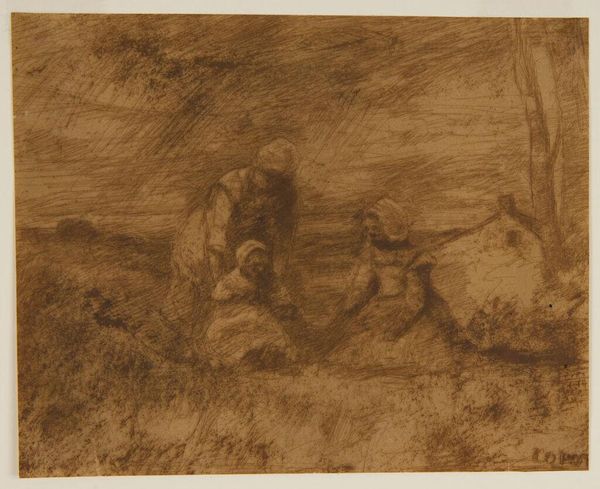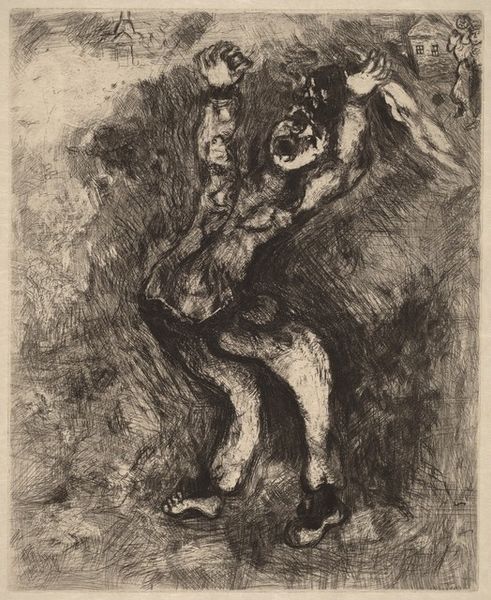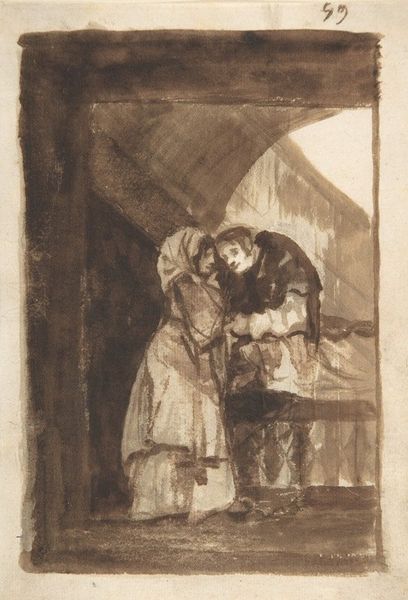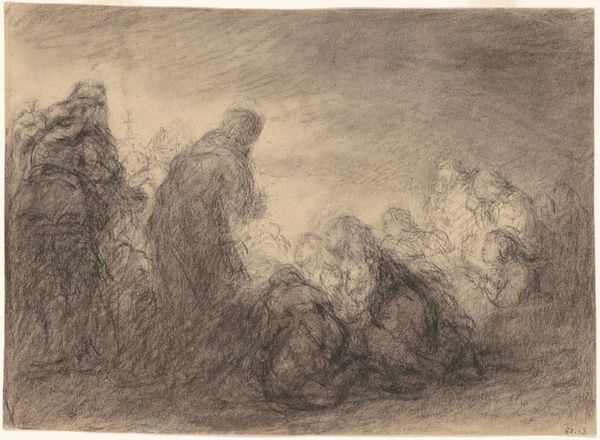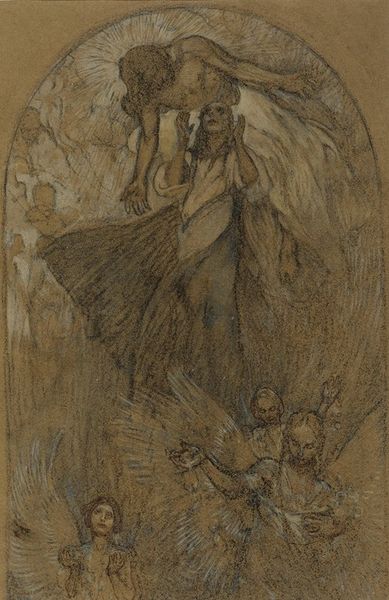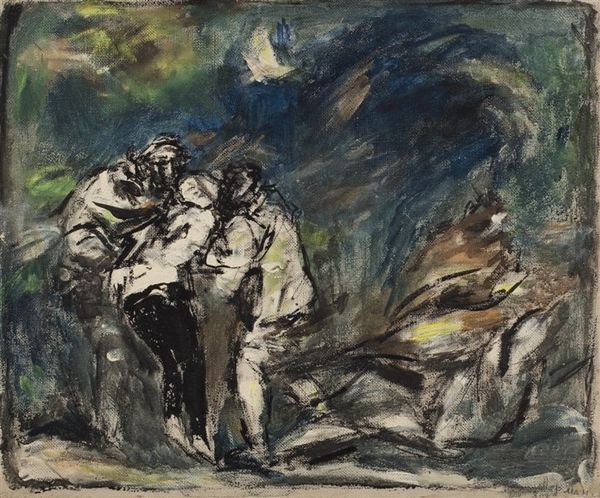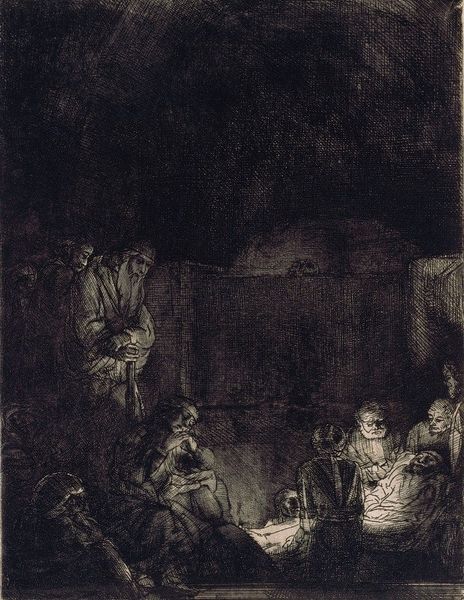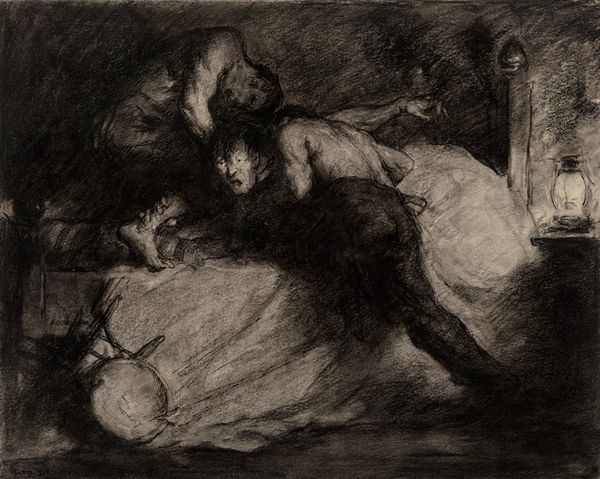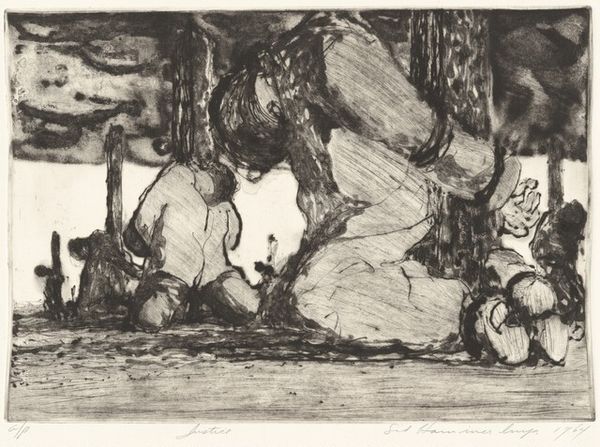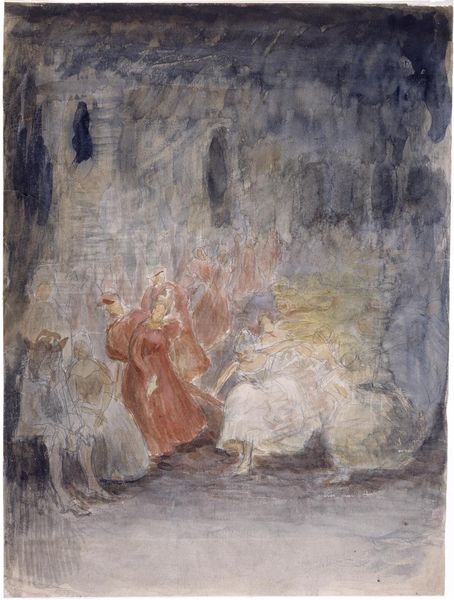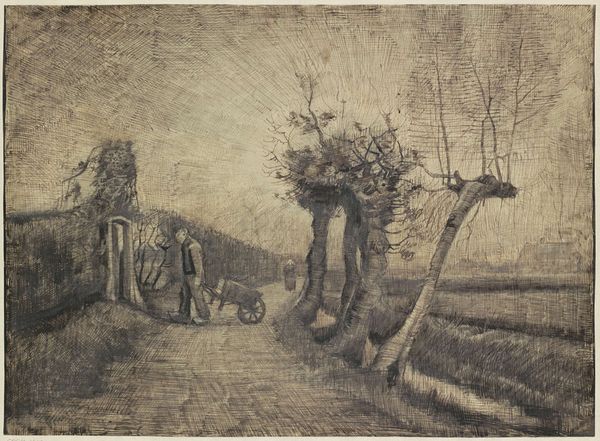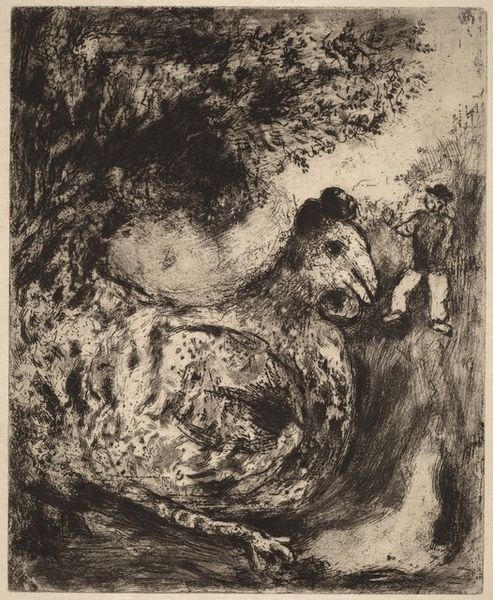
drawing, paper, ink, charcoal
#
drawing
#
mother
#
landscape
#
charcoal drawing
#
figuration
#
paper
#
charcoal art
#
ink
#
child
#
romanticism
#
genre-painting
#
charcoal
#
charcoal
#
watercolor
Dimensions: 16.5 x 24 cm
Copyright: Public domain
Editor: This ink and charcoal drawing, potentially titled "Summer Dream," shows a mother and child in what looks like a vast landscape. It feels almost dreamlike because of the soft lines. How do you interpret this work, with its use of such humble materials? Curator: The humble nature of the materials – the ink and charcoal on paper – is precisely where its power lies. The ease of production allowed the artist, Theo van Doesburg, potentially increased freedom. How does this work reflect broader economic and social conditions of artistic production at the time? Is he challenging the traditionally accepted oil on canvas? Editor: That’s interesting. I hadn’t considered the deliberate choice of ‘lesser’ materials. The landscape doesn’t seem idyllic, does it? The dark colors feel heavy. Curator: Exactly. It begs the question of what this depiction might say about land ownership and labour within the represented landscape. Are we witnessing a celebration or a critique of the working classes? What does that building on the horizon signify? What about access to resources or the distribution of wealth? The ink and charcoal almost feel like the very dust of labor. Editor: So, you're suggesting that we shift the focus from just aesthetic beauty to consider the socio-economic implications of the piece. Perhaps by analyzing how the materials are processed, obtained, or the subject’s socioeconomic background, that we understand what he is telling us. Curator: Precisely! It's in examining how art interacts with power, economy, and the lives of those making and viewing it that we come closer to understanding the whole picture. Editor: I never would have thought of this drawing holding so much historical context. This approach makes art feel more immediate. Thanks! Curator: Indeed. And that's how we avoid passively admiring and instead actively engaging. It is something I consider every time I view an artwork, even those I have known for years.
Comments
No comments
Be the first to comment and join the conversation on the ultimate creative platform.
